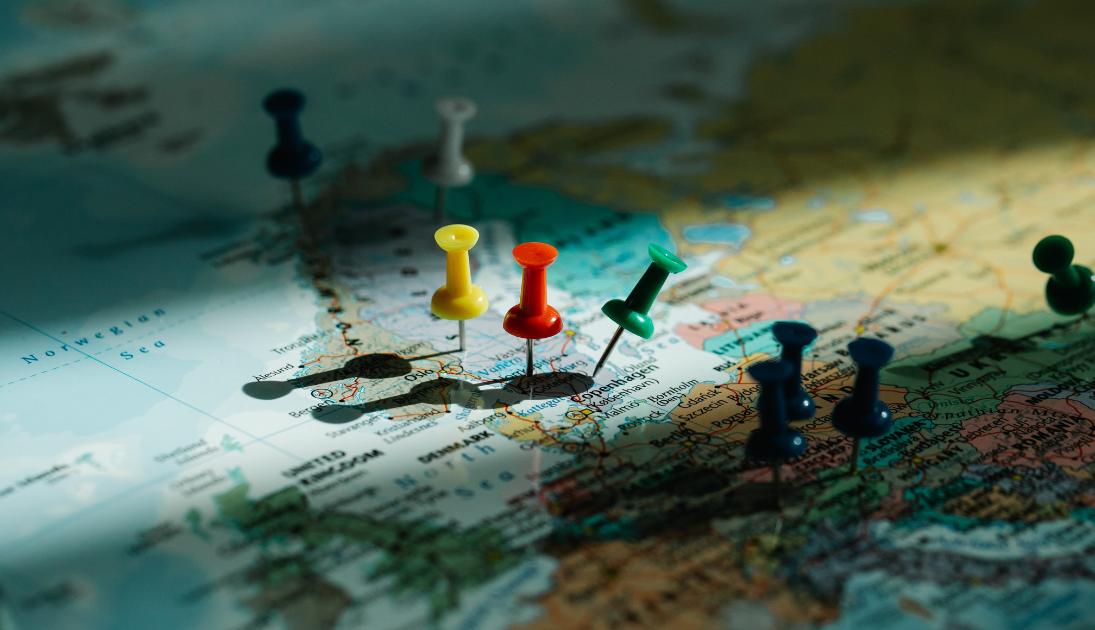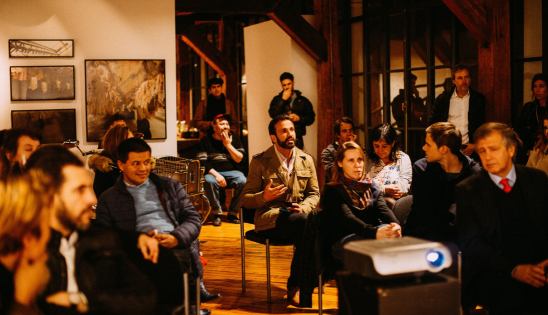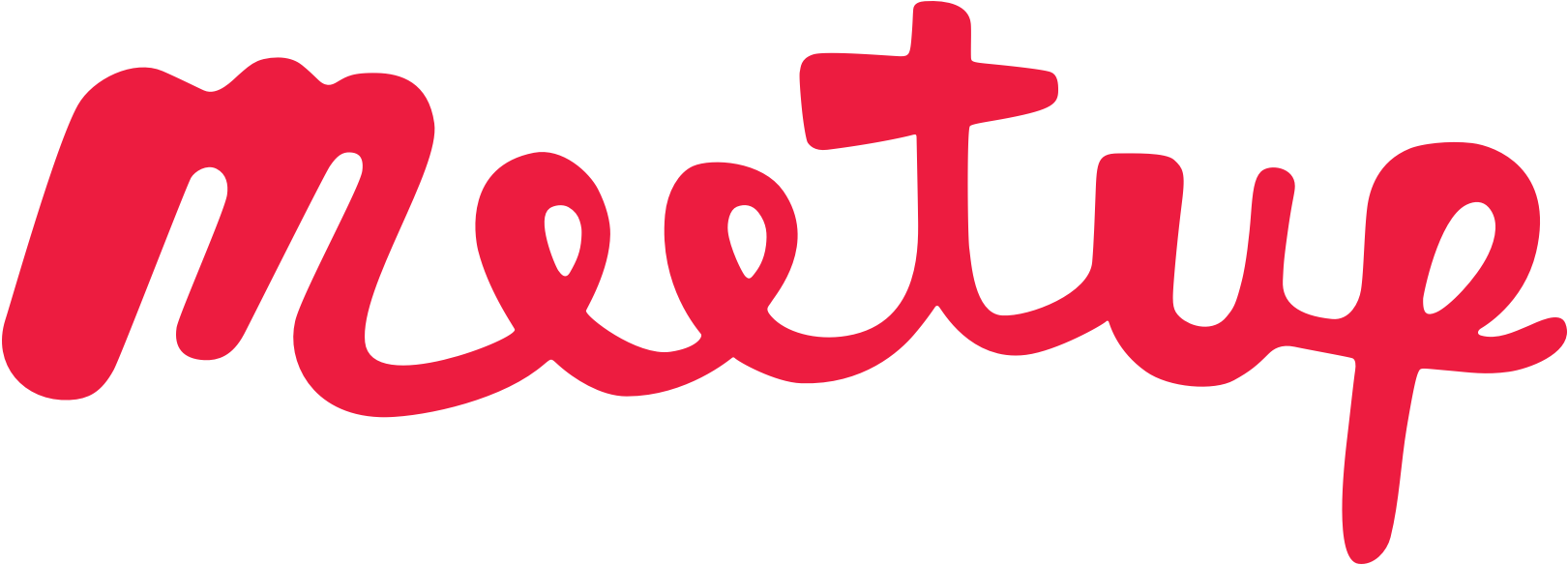Every community wants to broaden its membership. Bringing people together is the shared goal of all Meetup groups, no matter what specific topic you organize around.
During the pandemic, community as a whole—both in and outside of Meetup—faced unprecedented challenges, and was forced to slow down dramatically. Now, a few years removed from the peak of the social distancing era, togetherness is on the rebound. Both in-person and online connections are easier to facilitate because of all the progress made in health and safety, as well as in social technologies. So why is it that some Meetup Pro communities are still finding it difficult to attract new members?
One of the key reasons has to do with maximizing your potential through Meetup’s search engine and recommendation system. This simple breakdown of the Meetup algorithm will highlight the main adjustment you can make in order to establish a global presence: expanding to more groups.
How Meetup connects members to new groups
Using the website or the app, Meetup members who browse new potential connections are presented with lots of choices for events and groups. But instead of overwhelming members with options, the choices presented to them are curated by a complex algorithm that considers three main factors: a member’s location, interests, and needs.
When a member uses the search engine, the results they see will correspond to these factors. Also, when Meetup sends emails and notifications to members with specific event and group suggestions, those recommendations are based primarily on these factors.
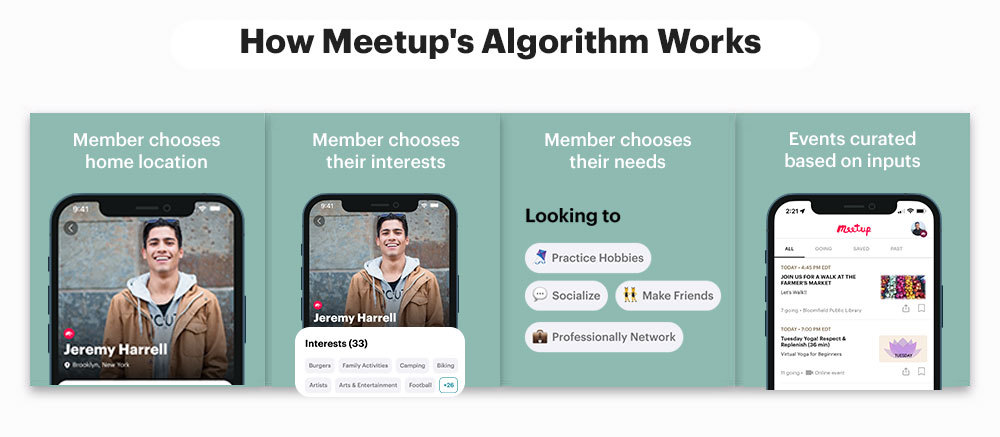
Why having a presence in multiple cities drives more event RSVPs
Discoverability
Now that it’s clear how favorable discoverability can strengthen your presence on Meetup, it’s time to learn how to take advantage of this insider info.
The most important thing you can do to increase your discoverability—and ultimately increase your membership—is to expand your community to multiple cities. If you have the resources to create new in-person chapters of your community, that’s great! But the easiest way to gain a bigger presence within the Meetup recommendation system is by hosting online events through several groups spread across multiple cities.
For example, let’s say you’re hosting an online event through a group based in Los Angeles. A member from Los Angeles who uses the search engine to find tech events will most likely discover your event on the very first page of search results.
However, a member from Chicago may have to search through five pages of results until they find your Los Angeles-based tech event. Even though it’s a virtual event that the Los Angeles and Chicago members could equally participate in, the search engine won’t favor your event for the Chicago member as much because it’s being hosted by a group based in Los Angeles.
Having your online event hosted across multiple locations will increase the number of members likely to see your event within top search results. You can easily do so by using the network event feature, a tool designed to promote one event across multiple groups.
Another important piece of information to keep in mind is that on average, the majority of registrations for online events come from users located within 100 miles (161 kilometers) of the location of the group hosting the online event. Though online events can be found within a 3,000 miles radius (4,828 kilometers radius) from the location of the hosting group (hence why you may see someone from London RSVPing to an event hosted by a New York group), more than 51% of your RSVPs will come from users within a 100 miles radius.
To illustrate this, let’s say you’re looking to expand your presence in the Northeast of the United States. Establishing a Meetup group in New York, Boston, and Washington D.C. would be strategic since there are more than 200 miles separating each city. Adding a group in Philadelphia wouldn’t help reach more members as much since it’s only 94 miles from New York. As such, you’d likely reach a similar audience with your Philadelphia group than with your New York group.
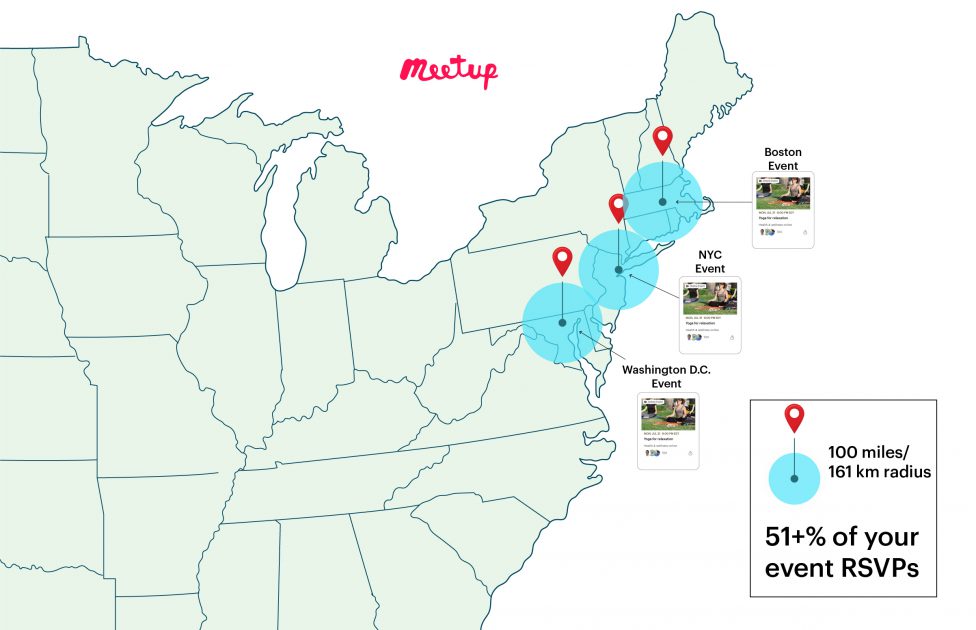
Similarly, if you’re looking to increase your membership in Europe, the best strategy would be to start groups in the most populated cities that are at least 200 miles (322 kilometers) from each other, e.g. London, Paris, and Berlin.
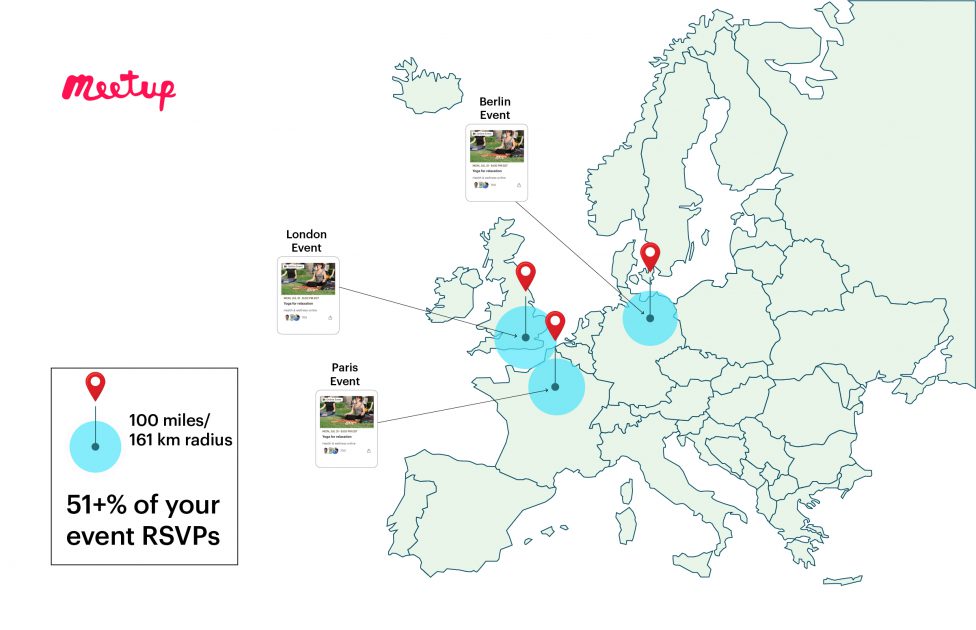
Here’s a table showing the cities on Meetup where we have the highest concentration of members:
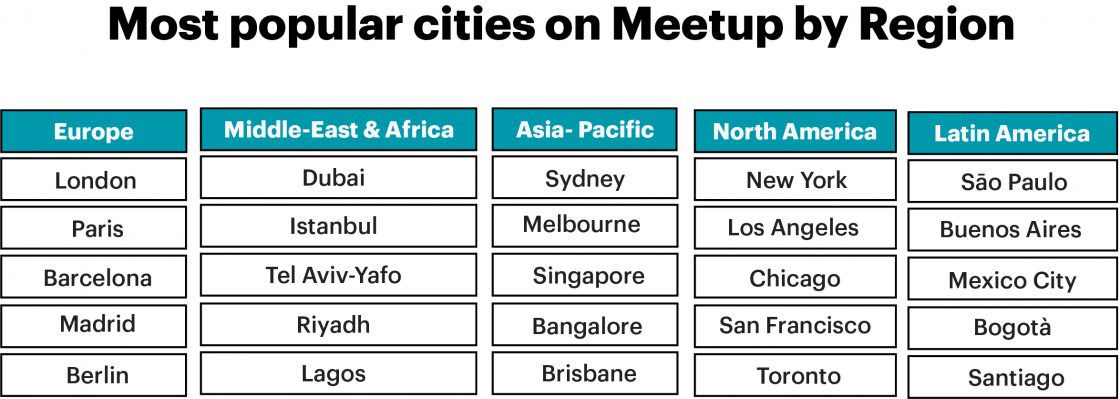
Key takeaways
- 51% of event registrations for online events come from users located within a 100-mile radius (161-kilometer radius) of the location of the group hosting the event.
- To boost your event registrations, establish groups in highly populated cities that are more than 200 miles (322 kilometers) away.
Recommendations
Another way that you can get Meetup’s algorithm to work for you is to think about recommendations. Part of what members sign up for when they join Meetup is tailored recommendations sent via emails and push notifications each week for groups and events based on their interests, location, and other factors such as their activity on Meetup.
The key thing to remember is that location is still a major factor in the recommendations that Meetup sends its members about groups to join and events to attend. If there is a group that fits a member’s interests but is located 1,000 miles from their hometown, they will not be as likely to hear about it in one of Meetup’s weekly recommendation emails.
Think about it like real estate: it’s all about location, location, location. The Meetup algorithm continues to use location as an important factor, even for online events. If you have groups in more than one city, you’ll have significantly more opportunities to be recommended to members around the world.
The Meetup algorithm continues to use location as an important factor, even for online events.
Let’s say you host weekly online yoga classes. If you promote your online classes in Barcelona, your events may be recommended to the 28,000 active Meetup members interested in wellness and sports events. If you promote your online classes across additional locations, you’ll have the opportunity to reach many more active Meetup members interested in wellness and sports events, including:
- 50,800 active members in New York
- 60,000 active members in London
- 21,700 active members in Melbourne
- 20,300 active members in Toronto
- 21,000 active members in Los Angeles
- 12,000 active members in Paris
- 15,000 active members in Dubai
More tips for growing your group globally
When you do expand your community to more individual Meetup groups, it’s a good idea to keep your branding consistent. Shut up & Write!, for example, is a Meetup Pro community that maintains the same look and feel for its 112,000 members spread across more than 400 groups in 60 countries.
Also, remember that keywords and naming conventions for event topics are an important aspect of your overall discoverability. If you make the effort to be crystal clear when describing your event activities, it’s more likely that an abundance of keywords will cause your event to skyrocket in search engine results.
Keep in mind different time zones when planning online events. Try to set a start time that will work for the majority of your membership. You can even provide alternate sessions to accommodate people in other parts of the world who can’t attend your 7:00 p.m. EST event, because it would mean waking up at 4:00 a.m. for them!
You might also get in the habit of recording your events, or taking notes during the event, so those who can’t attend still feel included. Providing a recap of your gatherings via Meetup messaging is a great way to stay connected to a globe-spanning community between events.
Learn more about Meetup Pro, Meetup’s premium subscription offering.
Mary Garcia (she/her) is Meetup’s Content Manager and editor of the Community Matters blog. When she’s not writing, Mary organizes a swamp fiction book club on Meetup. Find her on LinkedIn.
Last modified on September 19, 2023

